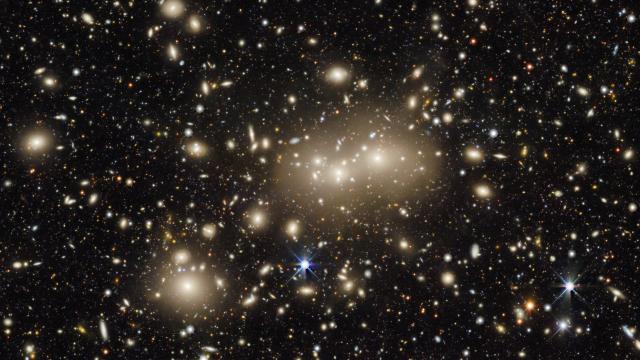Behold the limitless, crowded cosmos. The Dark Energy Spectroscopic Instrument (DESI) Legacy Imaging Survey has put out its latest data release, increasing the size of the largest 2D sky map.
The survey’s purpose is to improve our understanding of dark energy by mapping how the universe has expanded over the last 12 billion years. (The universe itself is about 13.77 billion years old.) To do that, the survey aggregates data collected by telescopes around the world and runs them through powerful Department of Energy computers, to assemble a massive map of the sky.
The new data is particularly taken from the Dark Energy Camera’s (DECam) views of the southern extragalactic sky, away from the Milky Way’s disk and therefore unencumbered by the goings-on of the nearby universe.
Dark energy is the je-ne-sais-quoi to which scientists ascribe the universe’s accelerating expansion. It accounts for roughly 68% of the universe. (Dark matter accounts for 27%, and the rest, less than 5%, is ordinary matter and everything we else we can observe.)
This 10th data release has increased the scope of the sky map to over 20,000 square degrees, or roughly half the sky. The map contains over a billion galaxies, billions of light-years away.
Images taken in an additional colour filter have been added to include infrared light data with the visible light data.
“The addition of near-infrared wavelength data to the Legacy Survey will allow us to better calculate the redshifts of distant galaxies, or the amount of time it took light from those galaxies to reach Earth,” said Alfredo Zenteno, an astronomer with National Science Foundation’s NOIRLab, in a NOIRLab release.
Currently, the DESI project is conducting a spectroscopic survey of 40 million-odd galaxies selected from the billion-plus imaged by the legacy survey.
With the Webb Space Telescope spotting galaxies in the distant universe looking every bit as developed as our Milky Way, it’s important to get large-scale survey work showing the overall development and distribution of cosmic objects. Taken together, all these details can help scientists develop a better understanding of cosmic origins and the evolution of matter and energy.
More: The World’s Largest Digital Camera Is Almost Ready to Look Back in Time
